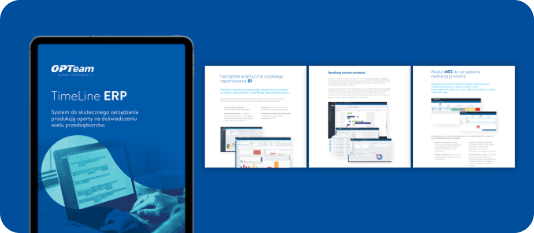Workflow system – what is it and why is it worth using?
To build and maintain a competitive advantage, companies must continually implement new products and develop existing ones while simultaneously optimizing costs. To address these challenges, companies utilize IT tools such as workflows to automate business processes. How do workflow systems help today's organizations function efficiently? Why is it worth choosing a modern business process automation tool?
Modern organizations strive to accelerate and streamline their business processes. To achieve this, workflows are used, allowing the definition of individual stages of information flow, which have already been defined as a specific sequence of tasks (scenarios). Workflows are suitable for both transactional process management and electronic document flow. Properly tailored software helps manage workflows. It offers many useful features that enable their definition and full automation.
How does a workflow process work?
The principle of a workflow tool is based on creating a process that takes into account its individual stages and the people involved. When a new event is registered (e.g., a request, invoice, contract, etc.), a specific information flow is triggered, which was planned step-by-step during the creation of the workflow. Upon receiving a task, the user receives a notification from the system requesting a specific action, simultaneously receiving all necessary information and suggested actions. The software allows for ongoing monitoring of the list of received tasks requiring attention. Depending on the configuration, users participating in the process also receive email reminders informing them of the need to complete specific tasks on time and of urgent tasks.
Why implement a workflow system?
Implementing workflow software offers many benefits, including:
- Efficient and fast execution of business processes: The workflow tool automatically forwards tasks to selected individuals or departments, sending notifications informing them of the need to take action. Reminders sent to employees at all levels ensure that no one forgets an important task.
- Flexibility: The workflow system allows for the ability to take into account the requirements and policies implemented within a given organization. When defining more or less advanced workflows, it is possible to tailor the workflow to specific areas of the company's or government's operations.
- Responsiveness to market changes: A solution based on a low-code platform allows for rapid response to market changes. Authorized users can update and adapt workflows to changing business processes at any time.
- Full support for employee productivity: Using workflows guarantees the automation of most repetitive activities and business processes. This means employees do not have to waste time on tasks that could be easily automated. Furthermore, a properly tailored tool helps employees at all levels better plan the execution of tasks in accordance with the approved workflow. Monitoring ongoing processes: By choosing workflow software, users involved in the process can constantly monitor the progress of a specific task. This reduces the risk of delays that could negatively impact the operation of a company or government institution. Reducing errors: Working with a workflow tool, you can easily monitor the entire task process, reducing the risk of errors.
What workflow system functionalities should be implemented?
When choosing software for business process automation, it's important to consider its functionalities. One of these is the ability to create forms and business rules without writing code. A practical tool should provide the ability to assign permissions and manage roles within the system on an ongoing basis. When considering the functionalities of workflow systems, it's undoubtedly worth noting the ability to track workflow and attach files involved in the process. In the case of missing documents, the system sends notifications informing the user of the need to complete them and forces the user to review high-priority requests. Integration with external tools such as Microsoft Outlook ensures that users receive ongoing emails about new and overdue tasks, which is definitely useful when faced with a heavy workload. It's also worth checking whether the business process automation tool offers remote access via a dedicated mobile app and web browser.
What processes can be modeled using workflow tools?
The right business process modeling tool allows you to streamline virtually every area of your organization. Workflow solutions are effective in departments handling sales, administration, finance, HR, marketing, and IT processes. Using electronic workflows in both manufacturing companies and government institutions ensures the rapid execution of assigned tasks and the seamless flow of information between employees scattered around the world.
Digitalization and automation of business processes and low-code?
For businesses striving to remain competitive, speed is paramount. This also applies to the systems they use, which are an integral part of functioning in today's digital world. To optimize business processes, it's worth choosing a workflow solution based on the nAxiom low-code platform. Using a flexible tool that allows for adaptation to current needs guarantees the ability to make modifications at any time and in unlimited quantities. Using the nAxiom low-code platform to automate business processes offers the opportunity to refine the requirements of the final product each time and adapt to changing business conditions. By choosing low-code technology, organizations choose a tool characterized by low implementation risk and ease of prototyping.
Summary
Organizations with a workflow system can successfully manage the flow of information. This is especially true for large, distributed companies with branches across the globe or operating in hybrid models. An additional advantage that makes entrepreneurs eager to choose workflow systems is the ability to integrate with external solutions, which allows for cost savings and significantly faster implementation of a new solution. The number of organizations using workflow systems increases year by year, meaning that it is a tool that meets even non-standard business needs.














